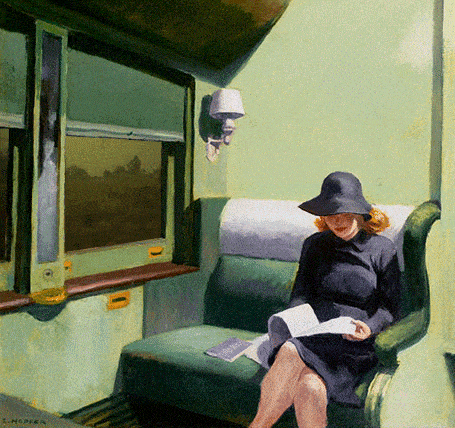Fourth of July at Cantigny Park – 2014
July 6, 2014 Leave a comment
Fourth of July at Cantigny Park has become an annual event for me. You will see why.
Cantigny Park is the setting for Col. Robert R. McCormick Museum (the Colonel’s former residence), the First Division Museum of military history and 30 acres of gardens.
Regarding Col. Robert R. McCormick’s military career, Wikipedia says:
Returning to the United States in 1915, he joined the Illinois National Guard on June 21, 1916, and, being an expert horseman, became a major in its 1st Cavalry Regiment. Two days earlier, President Woodrow Wilson had called the Illinois National Guard into Federal Service, along with those of several other states, to patrol the Mexican border during General John J. Pershing’s Punitive Expedition McCormick accompanied his regiment to the Mexican border.
Soon after the United States entered the war, McCormick again became part of the U.S. Army on June 13, 1917, when the entire Illinois National Guard was mobilized for Federal service in Europe. He was sent to France as an intelligence officer on the staff of General Pershing. Seeking more active service, he was assigned to an artillery school. By June 17, 1918, McCormick became a lieutenant colonel, and by September 5, 1918 had become a full colonel in the field artillery, in which capacities he saw action. He took part in the capture of Cantigny, after which he named his farm estate in Wheaton Illinois, and in the battles of Soissons Saint-Mihiel, and the second phase of the Argonne. He served in the 1st Battery, 5th field Artillery Regiment, with the 1st Infantry Division. His service ended on December 31, 1918, though he remained a part of the Officers Reserve Corps from October 8, 1919 to September 30, 1929. Cited for prompt action in battle, he received the Distinguished Service Medal. Thereafter, he was always referred to as “Colonel McCormick.”
Crusading publisher
McCormick returned from the war and took control of the Tribune in the 1920s. Given the lack of schools of journalism in the Midwestern United States at the time, McCormick and Patterson sponsored a school named for their grandfather, the Joseph Medill School of Journalism. It was announced by Walter Dill Scott in November 1920, and began classes in 1921.
As publisher of the Tribune, McCormick was involved in a number of legal disputes regarding freedom of the press that were handled by McCormick’s longtime lawyer Weymouth Kirkland. The most famous of these cases is Near v. Minnesota, 283 U.S. 697 (1931), a case championed by McCormick in his role as chairman of the American Newspaper Publisher Association’s Committee on Free Speech.
Tribune Tower Chicago
A conservative Republican, McCormick was an opponent of President Franklin D. Roosevelt and compared the New Deal to Communism. For a period in 1935, he protested Rhode Island’s Democratic Judiciary by displaying a 47 star flag outside the tribune Building, with the 13th star (representing Rhode Island) removed; he relented after he was advised that alteration of the American flag was unlawful. He was also an America First isolationist who strongly opposed entering World War II to rescue the British Empire. As a publisher he was very innovative. McCormick was a 25 percent owner of the Tribune’s 50,000 watt radio station, which was purchased in 1924; he named it WGN, the initials of the Tribune’s modest motto, the “World’s Greatest Newspaper”.…
McCormick carried on crusades against gangsters and racketeers, prohibition and prohibitionists, local, state, and national politicians, Wall Street, the East and Easterners, Democrats, the New Deal and the Fair deal, liberal Republicans, the League of Nations, the World Court, the United Nations, British imperialism, socialism, and communism. …
The New York Times said:
He did consider himself an aristocrat, and his imposing stature—6 feet 4 inches tall, with a muscular body weighing over 200 pounds, his erect soldierly bearing, his reserved manner and his distinguished appearance—made it easy for him to play that role. But if he was one, he was an aristocrat, according to his friends, in the best sense of the word, despising the idle rich and having no use for parasites, dilettantes or mere pleasure-seekers, whose company, clubs and amusements he avoided. With an extraordinary capacity for hard work, he often put in seven long days a week at his job even when elderly, keeping fit through polo and later horseback riding. In his seventies, he could still get into the war uniform of his thirties. (emphasis mine)
Maybe now you can see why I would visit Cantigny every July Fourth. We need men like Col. McCormick today.
Long before the (Harry-Reid-demonized) philanthropic Koch Brothers, Col. McCormick’s Foundation has contributed more than a billion U.S. Dollars for journalism, early childhood education, civic health, social and economic services, arts and culture and citizenship.
Now, some of the photos I shot on July 4th, 2014 at Cantigny Park, starting with the McCormick mansion:
above, a reflection pool facing south of the mansion; below, a pool facing east of the mansion
The mansion’s South entrance, below:
gardens, guns and gallantry:
Illinois in living color:
A day at Cantigny with dog tags, wild turkeys, cannons, Chevys and all:
Foutains in the Rose Garden facing the Idea Garden
The wilting photog on a hot 4th:
There too many pics to download for this post. Here are pics from last year:
July 4th, 2013 – Cantigny Park
























